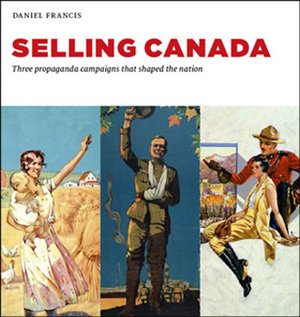Selling Canada: Three Propaganda Campaigns that Shaped the Nation

Support Canada's History in other ways (more)
by Daniel Francis
Stanton Atkins & Dosil, North Vancouver, B.C., 2011
192 pp., illus., $45 hardcover
For those of us who love immersing ourselves in the study of old government propaganda posters, Daniel Francis’s latest book is a real treasure trove. Selling Canada contains both classic images as well as some that have rarely been seen and takes readers through three pivotal PR campaigns spanning the period from 1880 to 1930: the luring of European settlers to the West; the recruitment of soldiers for World War I; and the promotion of Canadian tourism. Francis contends that these campaigns shaped an international image and brand for Canada that couldn’t have been further from reality.
In the first chapter, he recounts the Laurier government’s successful campaign, led by Clifford Sifton, to encourage immigration and settlement on the prairies. Francis ably takes readers through the strategy and tactics of the campaign as it developed, detailing how different propaganda tactics were used to minimize obvious negative perceptions of the prairies, such as the harsh climate and limited resources, and how the tactics were adjusted to lure exactly the kinds of immigrant farmers Canada needed.
Francis next focuses on the Great War recruitment effort. Using examples of campaign pins, telegraphs, graffiti, and other visuals to underscore the zeal with which English Canada entered the war, he leads readers through a fascinating analysis of how the campaign shifted over the duration of the war to become more nationalized and to engage more Canadians in the home-front effort.
The final chapter documents the collaborative efforts of the government and the railway companies to lure tourists to Canada after the tracks were completed. Francis touches on the early exploitation of Canada’s wilderness and Indian population as key selling features in a campaign that created icons and stereotypes that still exist today, and he examines how the introduction of automobiles and road travel later transformed Canada’s tourism industry.
Substantial, well-researched, accessibly written, and beautifully presented, Selling Canada is as alluring as the campaigns Francis writes about.
— Deborah Morrison (Read bio)
Deborah Morrison is the executive director of SEVEC and the former president and CEO of Canada’s History Society.